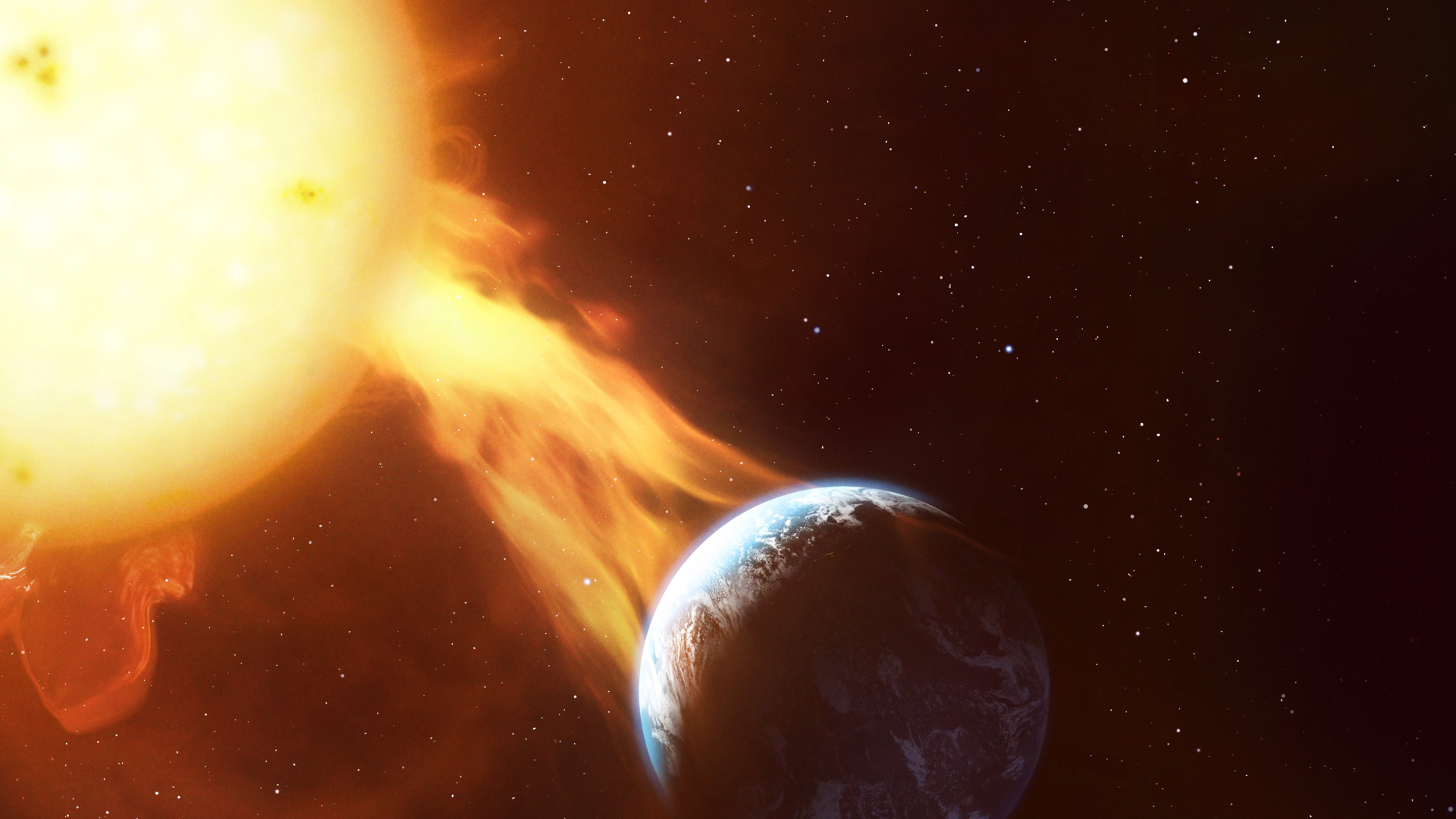'Potentially catastrophic' solar storm identified in ancient tree rings
If a solar storm of a similar magnitude hit today, it would wreak havoc on our technological world.

Earth was hit by the largest-ever detected solar storm 14,300 years ago, ancient tree rings reveal.
If a storm of a similar magnitude hit our planet today, it could have potentially catastrophic effects on our modern technological society.
The powerful solar storm was identified by an international team of scientists studying ancient tree rings preserved in the eroded banks of the Drouzet River, near Gap, in the Southern French Alps.
Related: Yes, solar storms are increasing, but don't lose sleep over an 'internet apocalypse.'
By studying ancient tree rings, the team found an unprecedented spike in radiocarbon levels that occurred 14,300 years ago. By comparing the ancient tree ring radiocarbon spike to measurements of beryllium — a chemical element found in Greenland ice cores that can be analyzed to provide a record of solar activity — the scientists proposed the radiocarbon spike was caused by a colossal solar storm that bombarded Earth's atmosphere with huge volumes of energetic particles.
"Radiocarbon is constantly being produced in the upper atmosphere through a chain of reactions initiated by cosmic rays." Edouard Bard, lead author of the study, said in a statement. "Recently, scientists have found that extreme solar events including solar flares and coronal mass ejections can also create short-term bursts of energetic particles which are preserved as huge spikes in radiocarbon production occurring over the course of just a single year." Bard continued.
The researchers argue that it's important to understand the future risks of such storms so we can build resilience into our communication and energy systems to shield them from potential damage.
Breaking space news, the latest updates on rocket launches, skywatching events and more!
"Extreme solar storms could have huge impacts on Earth. Such super storms could permanently damage the transformers in our electricity grids, resulting in huge and widespread blackouts lasting months." Tim Heaton, study co-author said in the same statement.
Lucky for us, such extreme solar storms — known as Miyake Events — are very rare. As far as we know, only nine have occurred in the last 15,000 years.
The most recent confirmed Miyake Events occurred in 993 AD and 774 AD, respectively, but the newly identified 14,300-year-old storm is the largest-ever recorded — approximately twice as powerful as these two and 10 times more powerful than the famous Carrington Event in 1859.
And unlucky for us, the exact nature of these occurrences remains poorly understood. We don't know what causes such extreme solar storms, nor do we know how to predict them as they have never been directly observed.
There is still much we don't know about our turbulent sun and its activity, but scientists are peering deep into the past to help predict the future.
"Radiocarbon provides a phenomenal way of studying Earth's history and reconstructing critical events that it has experienced." Heaton continued. "A precise understanding of our past is essential if we want to accurately predict our future and mitigate potential risks. We still have much to learn. Each new discovery not only helps answer existing key questions but can also generate new ones."
The research team from the Collège de France, CEREGE, IMBE, Aix-Marseille University and the University of Leeds published the results of their study on Oct. 9 in The Royal Society's Philosophical Transactions A: Mathematical, Physical and Engineering Sciences

Daisy Dobrijevic joined Space.com in February 2022 having previously worked for our sister publication All About Space magazine as a staff writer. Before joining us, Daisy completed an editorial internship with the BBC Sky at Night Magazine and worked at the National Space Centre in Leicester, U.K., where she enjoyed communicating space science to the public. In 2021, Daisy completed a PhD in plant physiology and also holds a Master's in Environmental Science, she is currently based in Nottingham, U.K. Daisy is passionate about all things space, with a penchant for solar activity and space weather. She has a strong interest in astrotourism and loves nothing more than a good northern lights chase!
